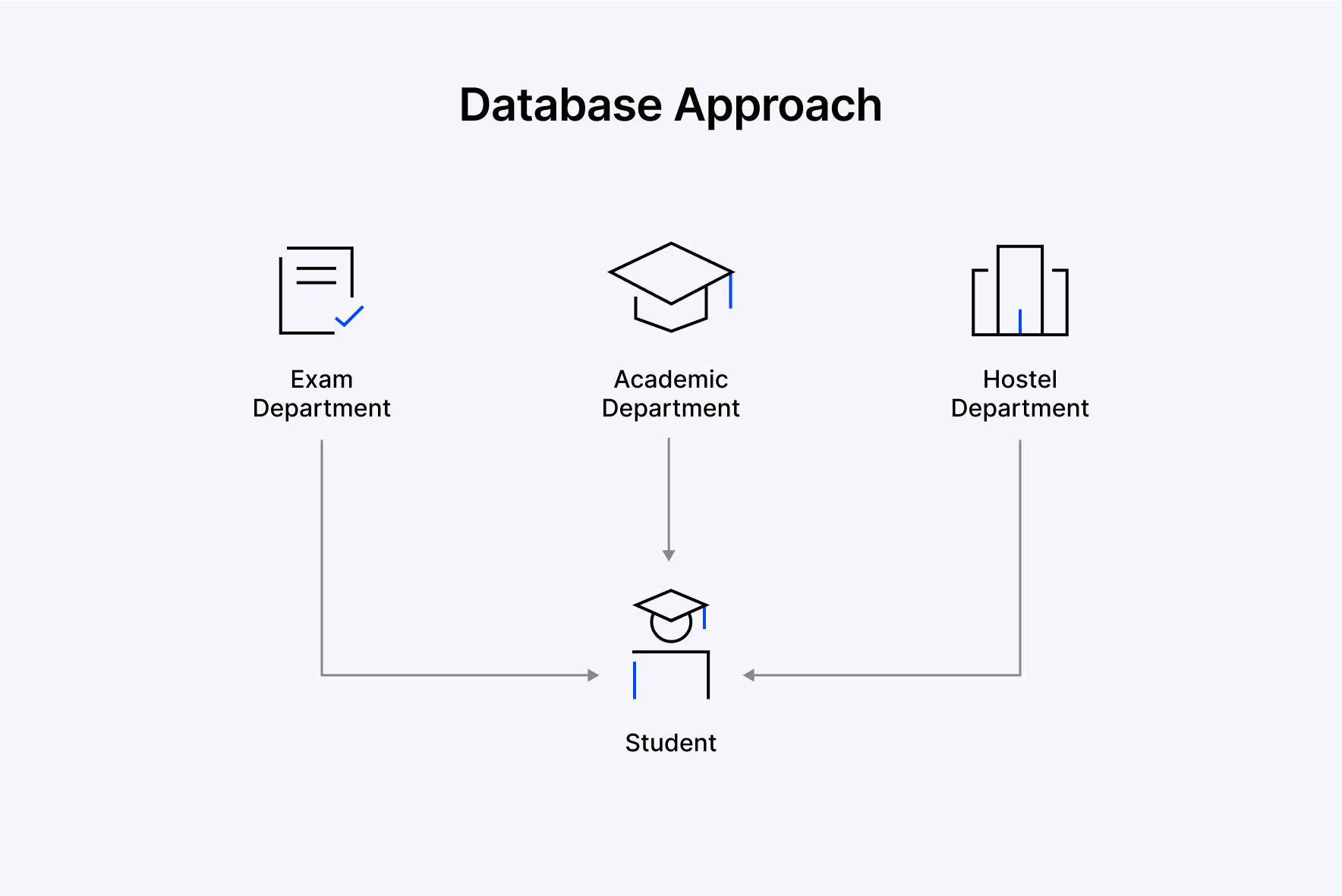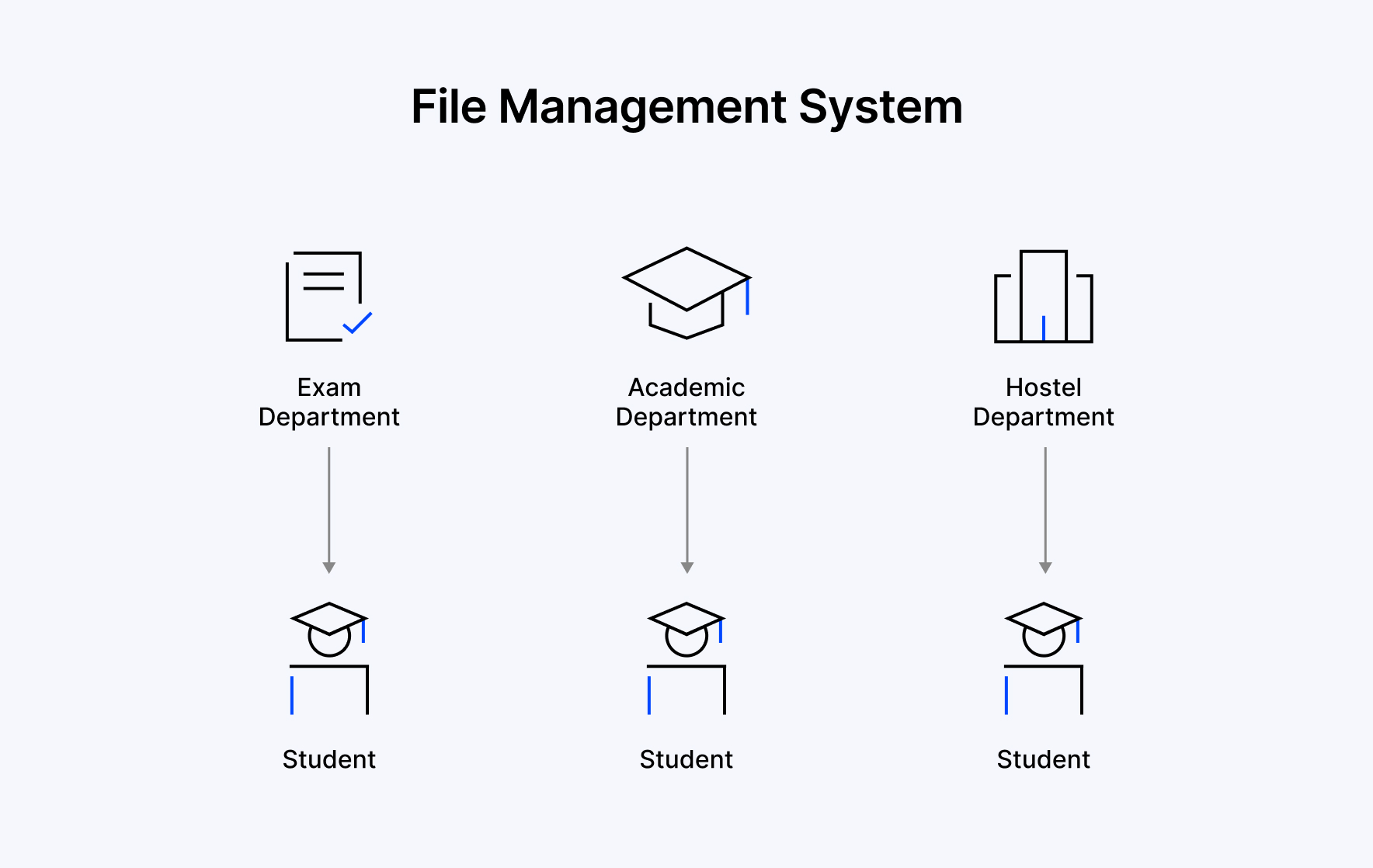Key Characteristics of DBMS

Modern data systems demand centralised, consistent, and secure access. As a result, businesses adopt the database approach to manage data effectively. The database approach is a structured, efficient, and safe way to manage information, unlike traditional file-based systems, which often cause data to be duplicated and inconsistent.
According to IoT Analytics, the global data management and analytics market is projected to grow at a CAGR of 16%, reaching $513.3 billion by 2030. This growth reflects the rising demand for technologies like Database Management Systems (DBMS), which are fundamental to managing and organizing enterprise data efficiently.
This article talks about what the database approach is, what its characteristics are. Let’s dive in!
In a Nutshell
The database approach provides a logical, centralized framework for managing data with greater integrity, security, and flexibility. It minimizes data redundancy, provides real-time access, and provides decision-making potential, which is fundamental to the world's business environment today.
What is the Database Approach?
The database approach entails utilizing a DBMS to store data in a central location, organized in a structured (and relational) format, rather than as numerous unconnected files of separate rows. The DBMS works to organize its data hierarchically into tables, rows, and columns.

For example, data about students at a school can be stored in one database called "students," and related records, such as academic, behavioral, and attendance, can be directly related records in one place. Without having to manage multiple files, it is clear that this is a systemic advantage in managing these records. The database approach minimizes redundancy, enhances data integrity and consistency, and performs many different complex requests depending upon the structure. Therefore, it is an optimal approach for developing present-day applications.
Looking to improve your data integrity and scalability?
Reach out to usLoading...
Characteristics of Database Approach
1. Data Organization and the Self-Describing Nature of the Database System
A DBMS organizes data in a structured way, usually as tables with specified relationships. The self-describing property of database systems assures that a database contains metadata about its data to give descriptions of its structure, constraints, and relationships. With this self-describing feature, users are able to access the data without needing outside documentation.
2. Integrity of Data
Data integrity provides accurate data reliability. A DBMS uses constraints, such as primary keys and foreign keys, to avoid inaccurate data entry. For example, a retail database may restrict product prices to only positive values, making sure product prices are always consistent through the various transactions.
3. Data Independence
With data independence, if you change the structure of the database, it does not affect applications that are dependent on the database. For example, adding a field to a customer's portion of a database does not change or affect the queries that are already in place. These DBMS characteristics provide freedom and therefore reduce the costs associated with the applications and ongoing maintenance.
There are two types of data independence in the database approach:
- Physical data independence: You can change the storage device without affecting the database’s logical structure.
- Logical data independence: You can modify the database structure without having to rewrite the application programs.
4. Data Security
Database management systems have strong characteristics, including security features like user authentication, access controls, and encryption. All these technologies help in protecting sensitive data, such as financial records or customer information, from unauthorized access.
5. Data Consistency with the Centralised Management System
Centralized control within a DBMS ensures data consistency across the whole organization. Once a user makes a change, everyone sees that change right away. Having a centralized database can help reduce errors and duplicate entries. For example, if someone in bookkeeping changes the address for a customer in the central database, everyone in the organization would see the same address.
6. Sharing of Data
The database approach allows for data sharing, which enables multiple users or applications to read and access data simultaneously. Being able to share data supports collaborative decisions. For example, both the sales and marketing teams can access the same list of customers from a database to develop aligned strategies.
7. Query and Report Flexibility
DBMSs give users the ability to take full advantage of database technologies through extensive query languages, like SQL. This allows infinite ways of interacting with data and allows businesses to create extremely complex information reports, such as sales trends, inventory levels, etc., with minimal effort.
For example, you can read the information of employees with a salary greater than 50000 from the employees database table using the SQL query:
8. Scalability and Performance of the Database
The scalability of DBMS assures that the databases can cope with the increasing data volume. Modern systems offer various indexing techniques and optimization procedures to scale performance, even when millions of records are stored in a database.
Techniques used by the database approach to provide scalability are:
- Indexing: It helps speed up query searches by letting each partition of a scaled database quickly find the data it needs.
- Partitioning: This involves breaking a large database into smaller, more manageable sections to better handle high traffic and balance the load.
- Clustering: It groups related data partitions together, boosting overall database performance and making data retrieval faster. Clustering can be either grouping related data rows on disk to speed up queries (data clustering) or using multiple servers for better performance and uptime (server clustering).
9. Backup and Recovery
DBMSs offer built-in backup and recovery processes to help prevent the potential loss of data due to hardware failure or human mistakes. For example, a bank could restore its transaction database to a specific point in time after a system crash, minimizing data loss.
10. Real-Life Examples
- E-commerce: E-commerce sites such as Amazon use DBMSs to handle their catalog of products, customer data, and order history, allowing them to provide fast and accurate transactions.
- Healthcare: Hospitals utilize databases to store patient records so that hospital staff have quick access to patients' medical histories while adhering to privacy and security laws.
Why Did the Database Approach Replace the File Management System?
Migration from file-centric systems to the database paradigm is due primarily to the disorganized operational character of traditional techniques. The file management systems store data in separate files, which causes data duplication, data inconsistency, and limits data sharing.
For example, in a file-centric system, customer data would be maintained in separate files, one for sales and another for billing. If customer data needed to be updated and transferred from the sales file to the billing file, an error could occur if the sales file was updated but the billing file was not. DBMS features address these issues by providing:
- Centralized Control: Removes duplication in data and ensures consistency.
- More Efficient Data Access: Provides complex queries and faster data access.
- Security and Integrity Benefits: Provides good protection and validation mechanisms to protect data.
- Scalability with Large Data Sets: Provides support for large volumes of data and multiple users.

Ready to Modernize Your Data Management?
Let’s talkLoading...
Advantages of the Database Approach
1. Streamlined Data Management
Data is stored in a single source, and processes intended for collecting data are fully automated, reducing the amount of manual effort to manage that data.
2. Better Data Quality
Data requirements were in place to constrain and validate the data very accurately, providing credible and trustworthy data on time, which is instrumental to analytics and reporting.
3. Increased Productivity
Employees no longer have to waste time fixing incorrect, messy, or duplicate data. Instead, they could focus on more important, strategic work.
4. Real-Time Informed Decision Making
Employees now have real-time access to accurate and reliable data, helping them take timely action and make informed, data-driven decisions, like identifying which markets are trending.
5. Improved Security
Sensitive information was protected using role-based access control and encryption, and allowed for compliance with actions such as GDPR (General Data Protection Regulation).
6. Ability to Scale for Growth
Databases can scale in a system to account for the upcoming big data for growth purposes. For example, creating subdivisions without degrading the whole system's performance.
Disadvantages of Using the Database Approach
1. High Implementation Costs
Setting up a database system can be expensive. You may need to buy the software, improve hardware, and hire experts to install and connect everything properly.
Adopting a database system can be costly. It often requires investing in licensed software, upgraded hardware, and skilled professionals to ensure proper setup and ongoing maintenance.
2. Increased Complexity of Systems
Setting up and maintaining a database requires a level of technical skill and expertise that may be complicated when a small company needs a database.
3. Additional Need to Employ Data Experts
Maintaining a DBMS may require data analysts or database administrators, which increases operational costs.
4. Data Loss
While that is not common, a data loss could occur if the backup systems are inadequate in the event of a system failure or a cyberattack.
5. Dependence on Technology
Your DBMS may represent a technology dependence that could leave you vulnerable if it is not regularly updated.
Conclusion
Core elements of the database (DB) approach, such as data organization, integrity, scalability, and security, play a crucial role in shaping modern data management and offer a range of advantages.
The database management system (DBMS) approach presents a centralized database, only provides consistent and validated data, but accesses data more efficiently, allowing organizations to truly take advantage of a data-centric environment. For businesses, the characteristics of the database management system will allow them to select the right DBMS, while also allowing them to effectively and efficiently improve their DBMS and its underlying systems.
Our team at Webandcrafts blends solid technical skills with a clear understanding of DBMS characteristics to develop reliable, secure, and scalable applications. Whether your existing database needs improvements or you want to build from scratch, we help ensure that your application aligns with industry best practices for database design and management. Let’s connect and discuss how we can help you move forward.
Ready to build scalable applications with a modern DBMS?
Let’s talkLoading...
Discover Digital Transformation
Please feel free to share your thoughts and we can discuss it over a cup of tea.









